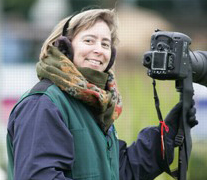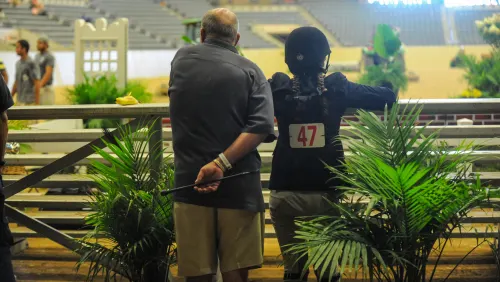 One of my fondest childhood memories was attending the National Horse Show in New York City when it was held at Madison Square Garden. Even though I wasn’t born in time to see the show at the Old Garden, there was more than enough pomp and circumstance at the Garden on 34th Street to impress a young girl.
One of my fondest childhood memories was attending the National Horse Show in New York City when it was held at Madison Square Garden. Even though I wasn’t born in time to see the show at the Old Garden, there was more than enough pomp and circumstance at the Garden on 34th Street to impress a young girl.
I was reminded of these experiences while reading George H. Morris’ Between Rounds column this week titled “This Is What Form Over Fences Looks Like” (p. 8). He was troubled by recent photographs in the Chronicle that showed some champions at the fall indoor shows with less-than-ideal form. So, he writes this week about some riders of yesteryear who exhibited classic form throughout their careers, with photographs to back up his thoughts.
Back in the ’70s, it wasn’t uncommon for kids to sneak up the ramp into the Garden when they didn’t have tickets. But once inside, one of the tricks was to find a seat that wasn’t occupied as most of the time it was standing room only. One year, for a Saturday night performance, we found seats in the middle of the arena just behind the boxes. We had the perfect location to study our idols, and they were so close we could hear the horses breathe.
I soaked in the harmonic riding of Michael Matz as he guided Jet Run over those imposing grand prix fences. I saw the strength and perfect control of Leslie Burr and the powerful gray Chase The Clouds as they tackled the open jumper class and then the puissance wall. Then there was the polished style of Conrad Homfeld, who was the leading open jumper rider that year riding Balbuco. During the matinee performances earlier in the week I sat mesmerized watching the great hunter riders, such as Rodney Jenkins, Charlie Weaver and Dave Kelley, whose invisible aids guided their horses.
As George noted in his column, it seems as if many of today’s riders have deviated from the traditional, classic form. While there have always been mavericks (Harry de Leyer, for instance), it seemed that in the ’70s and earlier, the riders who chose the path of classic form most often left the ring with the tricolors.
ADVERTISEMENT
Back then there were just a handful of great riders to emulate. Now our sport has grown exponentially, and due to sheer numbers, fewer riders and trainers are or were able to work with or even see in person the classic masters, such as George, Victor Hugo-Vidal or Ronnie Mutch, or their predecessors Gordon Wright and Bert de Nemethy.
In 1979, Roger Young, a student of Bill Cooney’s at George Morris’ Hunterdon, Inc., won the ASPCA Maclay. Today, Young is a trainer himself, and he has students who are trainers. Now we are often four or five generations away from the classic masters and their direct influences.
Decades ago, riding used to be all about being proper; now it seems to be more about getting the job done. And with more competitors there are more interpretations of classic style. It’s only natural then that as the riding population grows, the likelihood of deviating from the “normal,” classic style is also greatly increased.
Today’s young riders have dozens and dozens of talented professionals to look up to. But I hope that those professionals will remember that they have a generation or two of young riders watching them closely. It’s up to these professionals to keep good riding form in fashion so future generations will still have classic examples.














